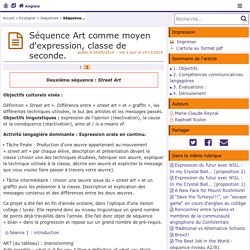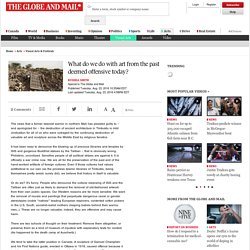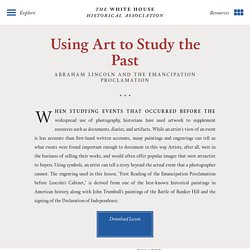

Authentication CAS nécessaire ! Projet: 'Is Graffiti Art or a Crime?' - [English website of the Académie de Toulouse] Séquence Art comme moyen d'expression, classe de seconde. - Page 2/2 - Anglais. Deuxième séquence : Street Art Objectifs culturels visés : Définition « Street art ».

Différence entre « street art » et « graffiti », les différentes techniques utilisées, le but des artistes et les messages passés. Objectifs linguistiques : expression de l’opinion (réactivation), la cause et la conséquence (réactivation), aims at / is a means of. Activité langagière dominante : Expression orale en continu. Tâche finale : Production d’une œuvre appartenant au mouvement « street art » par chaque élève, description et présentation devant la classe (choisir une des techniques étudiées, fabriquer son œuvre, expliquer la technique utilisée à la classe, décrire son œuvre et expliciter le message que vous voulez faire passer à travers votre œuvre). Tâche intermédiaire : choisir une œuvre issue du « street art » et un graffiti puis les présenter à la classe.
Ce projet a été fait en fin d’année scolaire, dans l’optique d’une liaison collège / lycée. What do we do with art from the past deemed offensive today? The news that a former Islamist warrior in northern Mali has pleaded guilty to – and apologized for – the destruction of ancient architecture in Timbuktu is mild vindication for all of us who were outraged by the continuing destruction of valuable art and sculpture across the Middle East by religious fanatics.

It has been easy to denounce the blowing up of precious libraries and temples by ISIS and gorgeous Buddhist statues by the Taliban – that is obviously wrong, Philistinic, uncivilized. Sensitive people of all political stripes are against it. It is officially a war crime now. We are all for the preservation of the past and of the hand-worked artifacts of foreign cultures. Even if those cultures had values antithetical to our own (as the priceless Islamic libraries of Timbuktu, being themselves pretty sexist, surely did), we believe that history in itself is valuable. Or do we? We tend to take the latter position in Canada. Report Typo/Error. Using Art to Study the Past - White House Historical Association. When studying events that occurred before the widespread use of photography, historians have used artwork to supplement resources such as documents, diaries, and artifacts.

While an artist's view of an event is less accurate than first-hand written accounts, many paintings and engravings can tell us what events were found important enough to document in this way. Artists, after all, were in the business of selling their works, and would often offer popular images that were attractive to buyers. Using symbols, an artist can tell a story beyond the actual event that a photographer cannot. The engraving used in this lesson, "First Reading of the Emancipation Proclamation before Lincoln's Cabinet," is derived from one of the best-known historical paintings in American history, along with John Trumbull's paintings of the Battle of Bunker Hill and the signing of the Declaration of Independence.
Download Lesson Objectives To analyze artwork as historical artifact. Introduction Activity Afterword. ARTS / What should we preserve: Next Friday at the Tate Gallery artists, writers and cultural decision makers meet to debate one of the central questions of our culture. NEIL COSSONS - Preserve Our forebears were rampant collectors.

Their prolific gift is now our greatest asset. It is also our prime responsibility. It shapes our message, defines our culture. And it consumes our budgets. So, one myth needs to be laid to rest. These new demands reflect the extraordinary success achieved by museums in the last quarter-century. Here a second myth needs to be quietly put down.
Computer-based documentation systems are now widespread, giving instant access to what museums hold. The next stage will bring the real breakthrough. Nor will the fact that most museum objects are three-dimensional be an obstacle. Computer documentation and mechanised retrieval will deliver vast improvements in quality of service and access. So why, given these extraordinary powers of imaging and retrieval, will we continue to need objects at all? So, museums need to concentrate their available resources on high-grade scholarship, not all as permanent employees on the payroll. Shirley, d'après l'oeuvre de Edward Hopper.- Anglais. Street Art - Séquence Art comme moyen d'expression, classe de seconde. - Page 2/2 - Anglais.